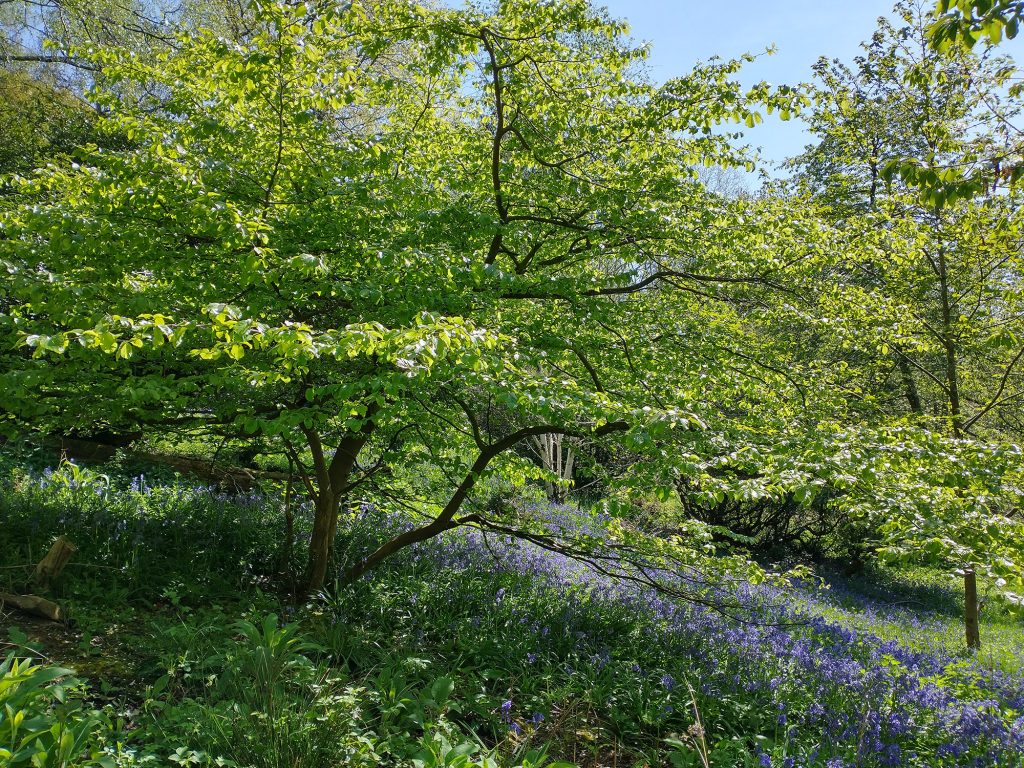10 bluebell facts you might not know

As the bluebell season draws to a close, here are ten favourite facts about of of the nation’s favourite flowers:
- Ancient origins
Bluebells are believed to have appeared in Britain shortly after the last Ice Age, serving as remnants of the ancient wildwood that once covered the land. - A flower of many names
The Latin name is Hyacinthoides non-scripta, which means “the hyacinth not written about”. The name Hyacinthoides comes from a Greek myth. When Prince Hyacinthus died, the god Apollo’s tears spelled the word “alas” on the petals of the flower that grew from his blood. Non-scripta means “unlettered”, to set it apart from the better-known hyacinth. Early British botanists called them crowtoes. They’ve also been known as harebells, witches’ thimbles and cuckoo’s boots, names shared with other flowers that bloom in spring alongside the returning cuckoo. - British stronghold
Britain is home to up to 49% of the world’s population of bluebells, making these flowers a quintessential part of the country’s natural heritage. However, as with much of nature, they are under threat. - Legal Protection
Bluebells are protected under the Wildlife and Countryside Act 1981, making it illegal to pick, uproot, or destroy them, with further regulations to prevent bulb uprooting. This was largely driven by illicit activity to stock some of the nations garden centres. - Slow growth
It takes approximately six years for a bluebell to establish from seed to flower, highlighting their slow but steady growth process. It can also take them this long to recover from trampling, as the leaves are unable to continue photosynthesis and they are sensitive to soil compaction. - Unique characteristics
British bluebells can be identified by their thin stem, narrow leaves, and drooping flowers on one side, emitting a sweet scent with cream-colored pollen. By comparison the invasive Spanish bluebell has a thicker stem with flowers on both sides, and no scent. Spanish bluebells are likely to outcompete the British variety, so if planting it’s a good idea to ensure your bluebells are British. - Rare variants
Approximately 1 in 10,000 British bluebells exhibit a rare white coloration, adding a touch of rarity to these already enchanting flowers. - Ecological Importance
Bluebells play a crucial role in the ecosystem, providing nectar for woodland butterflies, bees, and hoverflies, contributing to biodiversity. We love that bees are known to ‘steal’ from bluebells, nibbling a hole in the base to remove nectar without having to pollinate the plant. - Folklaw and magic
Bluebells are steeped in folklore and mythology, associated with faeries, magic, and even death, weaving a rich tapestry of cultural significance. It’s said that fairies dry their spells on them, so skipping through the bluebells is likely to release all sorts of mischief. Also said that a child who picks a bluebell will be snatched away by the faery folk, never to be seen again. Unsurprisingly many folks held it was foolish to pick bluebells or bring them into the house. - Old uses and new hopes
Throughout history, bluebells have been utilised for various purposes, including adhesive in Bronze Age arrow making, starch for Tudor collars, whilst bookbinders have used bluebell derived adhesives for centuries. In modern research there’s a possibility that bluebell extracts could be used to combat HIV and cancer.

Let them fade for another year, knowing these ancient flowers will quietly return, just as they always have.
